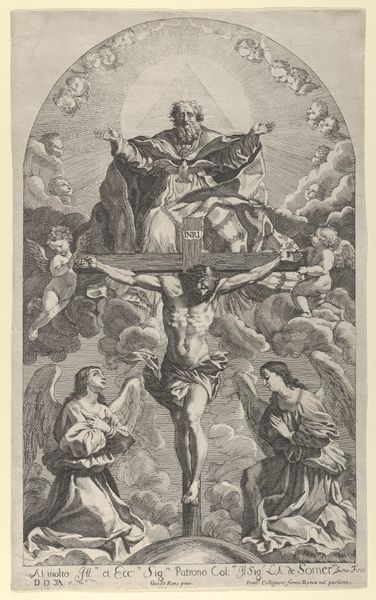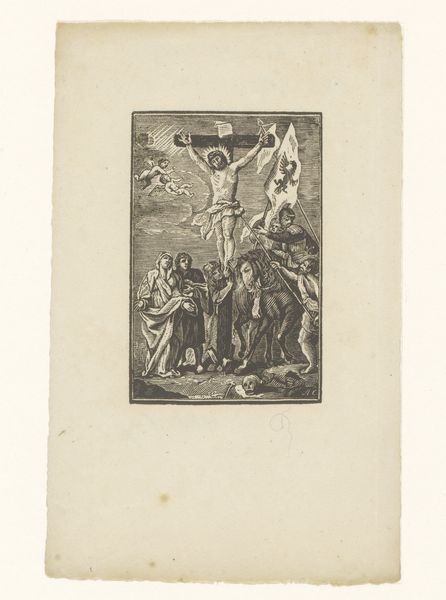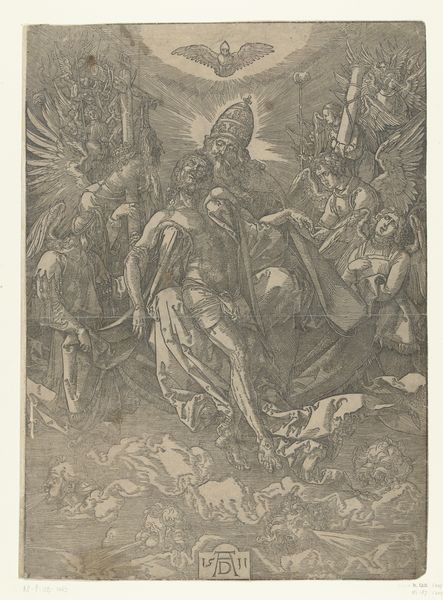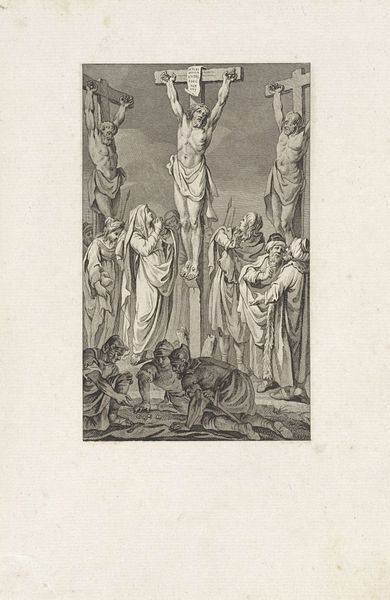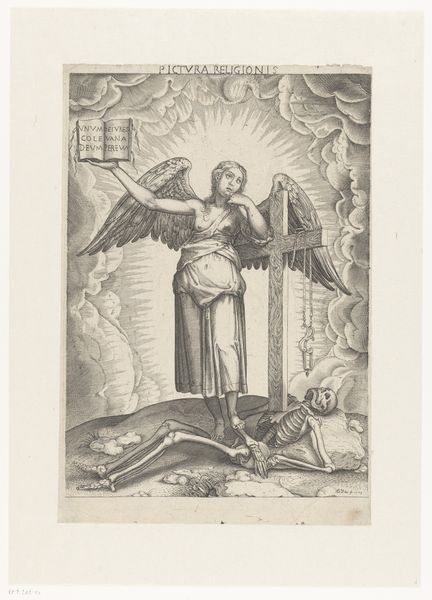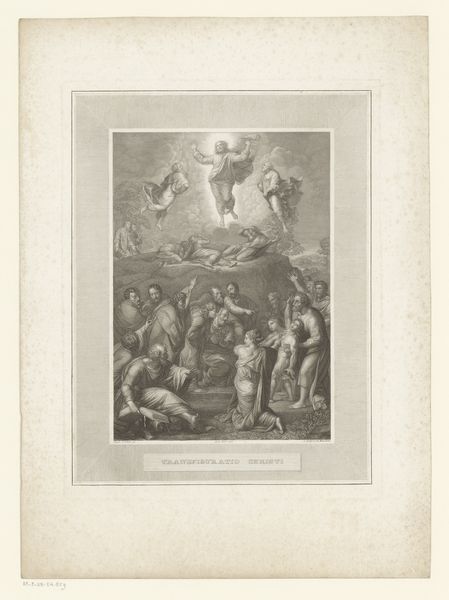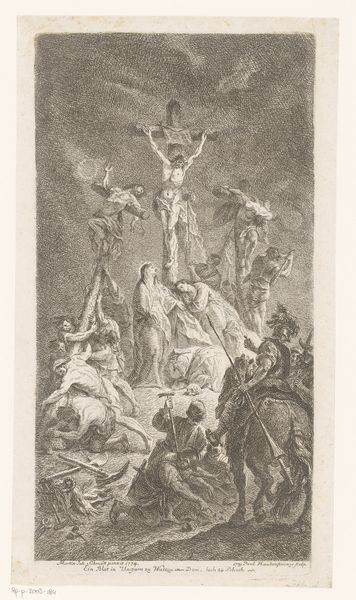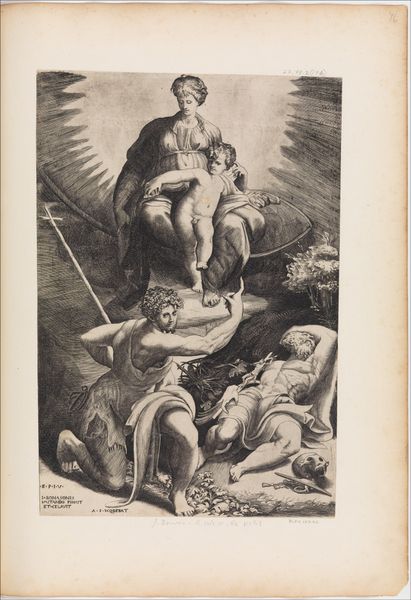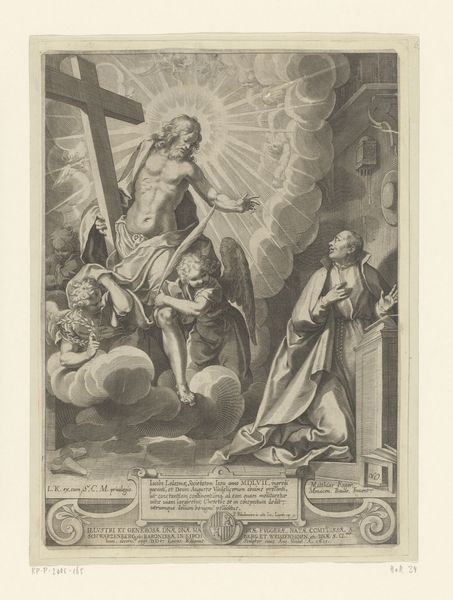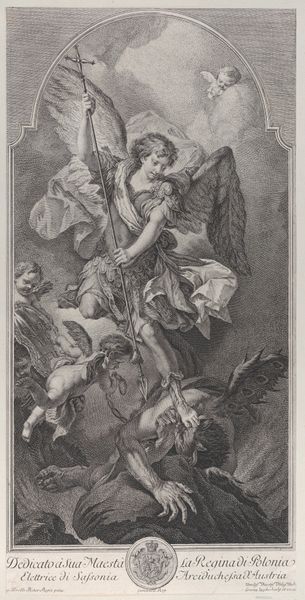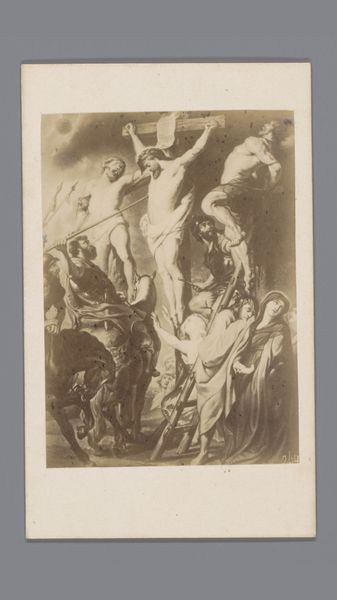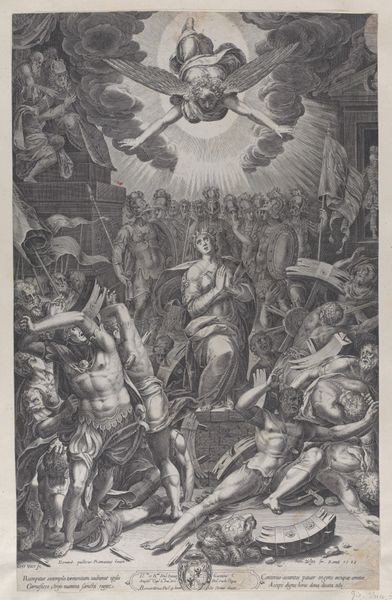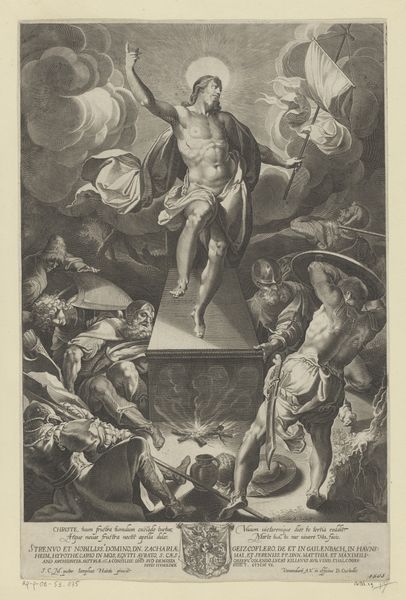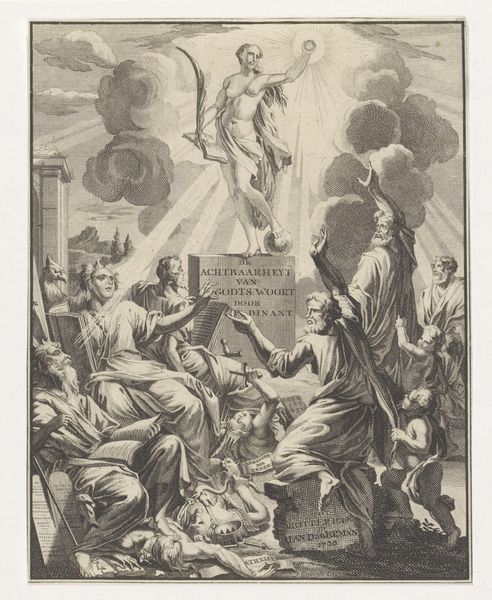
Dimensions: 254 mm (height) x 184 mm (width) (bladmaal)
Curator: This is a print from 1870-1877 entitled "Illustration til "December", digt af Grundtvig," currently residing at the SMK - Statens Museum for Kunst. Editor: What a startling image. The light pouring from that central figure, almost hurts the eyes, while those surrounding seem trapped in shadow. Curator: Indeed, the artist uses line and negative space masterfully. It's interesting to consider it within the broader context of Romanticism and its focus on emotion and spirituality, but specifically looking at the tradition of history painting which often idealizes historical or mythical scenes, which in many ways speaks to both the divine figure and the onlookers. Editor: Right, history painting always has this gloss, this sort of propagandistic lens. It reminds me, however, how printmaking democratized images. To me this raises the question about who got access to it back then and what biases that entails, since the masses for sure were excluded. Curator: A potent point about accessibility. It’s made from drawing, engraving, and print. Each process carrying its weight and impact, layering one skill over the other. In terms of material processes it feels less immediate and more planned when compared to let's say impasto paint or collage. Editor: Absolutely. You know, I get a real sense of societal anxieties seeing it. Are those figures in awe, or are they recoiling? Their postures seem to hold both fear and fascination. What kind of social script are we reading? I love how the pencil drawings, pencil sketch and pencil work add rawness against the idea of finished, monumental fine art. Curator: I feel a similar push and pull. The narrative itself feels almost secondary to the emotional and technical expression. The use of engraving gives it that distinctive textural depth, amplifying that emotional turbulence you mention. Editor: Spot on. Overall it invites us to question the making of art, access to art, and to understand this as social product. Curator: I leave pondering its place within the shifting landscape of Romanticism, and the enduring human need to grapple with faith, history, and how to share that story, for better or worse.
Comments
No comments
Be the first to comment and join the conversation on the ultimate creative platform.
